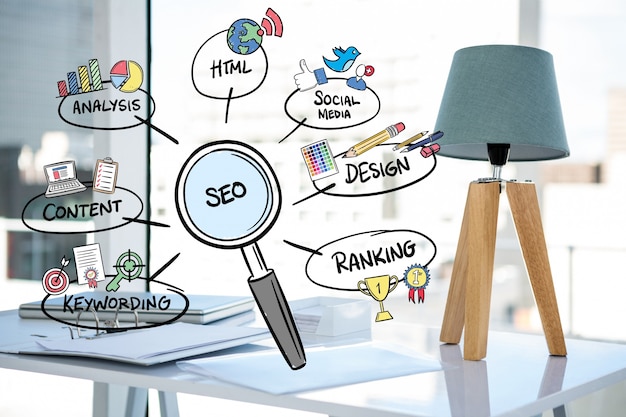
Kleverish Digital Marketing Services That Works  ×
×
 ×
×


Google Ads is a crucial role in driving successful online campaigns. In today’s fast-paced digital marketing world, mastering Google Ads is essential for businesses looking to target the right audience and boost their online presence. Whether you’re a beginner or an expert, this guide will help you understand Google Ads, optimize your keyword strategy, and maximize your ROI. We’ll also explore common challenges, budget tips, and emerging trends to keep you ahead in the competitive landscape.
Google Ads is an online advertising platform developed by Google, where businesses can bid on keywords to display clickable ads in Google’s search results. It operates on a pay-per-click (PPC) model, meaning advertisers only pay when users click on their ads. Google Ads also extends to display advertising, YouTube ads, and Google Shopping ads, providing businesses with multiple ways to engage potential customers.
With advanced targeting options, Google Ads allows advertisers to reach specific audiences based on user intent, behaviors, and interests. This means you can tailor campaigns to attract high-quality traffic that is more likely to convert into customers. Furthermore, Google Ads provides various campaign types, such as Search, Display, Shopping, Video, and App campaigns, making it a versatile solution for different business goals.
Google processes over 8.5 billion searches per day, making it the most widely used search engine. A well-optimized Google Ads campaign ensures that your brand reaches users at the exact moment they’re searching for products or services like yours. Whether it’s through search ads, banner ads on partner websites, or video ads on YouTube, Google Ads helps businesses tap into a vast audience.
Google Ads allows advertisers to refine their audience targeting based on keywords, location, device, demographics, and even past behavior. This precision ensures that your ads are seen by the most relevant audience, increasing conversion rates. Additionally, Google’s audience segmentation tools enable advertisers to create tailored ad experiences based on user interests and behaviors, making campaigns even more effective.
Since Google Ads operates on a PPC model, you only pay when someone interacts with your ad. This makes it a cost-effective solution
compared to traditional advertising methods, where you often pay a fixed fee regardless of results. You can also set daily budgets and bidding strategies that align with your financial goals, ensuring better cost control and optimal returns.
Google Ads provides detailed analytics on impressions, clicks, conversions, and ROI. This data-driven approach allows businesses to optimize their campaigns in real-time and scale their efforts based on performance. With advanced reporting tools, advertisers can track user interactions and make data-driven decisions to improve campaign effectiveness.
Google Ads operates through an auction system. Here’s a simplified breakdown of how it works:

In addition to keyword bidding, advertisers can also use automated bidding strategies powered by machine learning. These strategies, such as Target CPA (Cost Per Acquisition) or Maximize Conversions, help optimize ad spend by dynamically adjusting bids based on user behavior and expected outcomes.
Use tools like Google Keyword Planner, SEMrush, or Ahrefs to identify high-intent keywords relevant to your business. Focus on a mix of short- tail and long-tail keywords for better targeting. Additionally, conducting competitor analysis can help uncover keyword opportunities that may give you an edge in your industry.
Your ad copy should be clear, concise, and action-driven. Use persuasive language, highlight unique selling points, and include a
strong call to action (CTA) such as “Shop Now” or “Get a Free Quote.” Experiment with different ad variations and use A/B testing to determine which messages resonate most with your audience.
A well-optimized landing page ensures that users who click on your ad take the desired action, whether it’s making a purchase, signing up for a newsletter, or requesting a quote. Keep your landing page fast, mobile-friendly, and relevant to the ad copy. Using engaging visuals, clear messaging, and trust signals (such as customer testimonials) can improve conversion rates.
Ad extensions such as site links, call extensions, and location extensions enhance your ad by providing additional information and increasing visibility. Using structured snippet extensions can also provide more context about your business offerings, improving
engagement.
Regularly review campaign performance metrics and make necessary adjustments. A/B test different ad variations, refine targeting, and
optimize bids to maximize results. Use conversion tracking to assess ROI and tweak ad strategies accordingly.
Negative keywords prevent your ads from appearing for irrelevant searches, saving your budget for clicks that are more likely to convert. Regularly update your negative keyword list to filter out low-quality traffic and improve ad relevance.
Use remarketing campaigns to re-engage users who have previously visited your website but didn’t convert. These ads serve as reminders and can significantly improve conversion rates. Google Ads also offers dynamic remarketing, which displays personalized ads based on user interactions with your website.
Start with a clear budget strategy that aligns with your business goals. Monitor cost-per-click (CPC) trends and adjust bids accordingly.
Consider using automated bidding strategies to make the most out of your ad spend while maintaining efficiency.
Instead of relying solely on search ads, explore YouTube ads, display ads, and shopping campaigns to broaden your reach and engage
audiences across different platforms.
Start with a clear budget strategy that aligns with your business goals. Monitor cost-per-click (CPC) trends and adjust bids accordingly. Consider using automated bidding strategies to make the most out of your ad spend while maintaining efficiency.
Company Healthfocus, an local brand, struggled with low traffic and stagnant sales. After implementing a Google Ads strategy focused on high-intent keywords, dynamic remarketing, and A/B tested ad copies, they saw a 150% increase in sales within three months. By continuously refining their ad campaigns and optimizing their landing pages, Company X achieved a substantial return on investment and expanded their market reach.

Google Ads remains a powerful tool for businesses looking to enhance their online visibility, attract more customers, and increase sales. By implementing the right strategies, continuously optimizing campaigns, and staying up to date with Google’s ever-evolving advertising trends, businesses can leverage Google Ads for substantial growth.
If you haven’t yet harnessed the power of Google Ads, now is the perfect time to start. Partner with Kleverish, the Best Google AdWords Agency, to experience the full benefits of targeted digital marketing and watch your business reach new heights.

My name is Nikunj, and I am a professional tech blog writer. I have 5+ years of experience in creating appealing, informative content in the technical niche and have enriched various websites with my powerful words. During my career, I have written more than 150+ plus guest blogs, articles for topics such as SEO services, social media, Web Development and app development content and many More.



 Rated 4.99/5 overall
across 100+ reviews
Rated 4.99/5 overall
across 100+ reviews